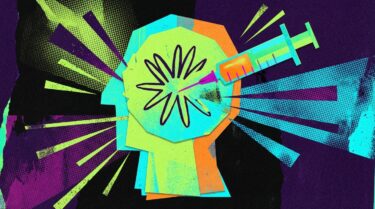U.S. President Joe Biden has issued a sweeping AI executive order aimed at putting the U.S. at the forefront of AI development and governance.
The executive order aims to set new standards for the safety and reliability of AI, protect the privacy of U.S. citizens, promote equal opportunity and civil liberties, support consumers and workers, foster innovation and competition, and strengthen U.S. global leadership.
It highlights the growing impact of AI on the safety and security of Americans and provides a set of measures to protect citizens from potential risks posed by AI systems. Developers of sophisticated AI systems must share security testing results and other critical information with the U.S. government.
- Under the Defense Production Act, companies that develop foundation models that pose a serious risk to national defense, national economic stability, or national public health and safety must notify the government when the model is trained and share the results of any red team security testing.
- The government supports the development of standards, tools, and testing to ensure that AI systems are safe, secure, and trustworthy. The National Institute of Standards and Technology will establish standards for comprehensive Red Team testing to ensure safety before AI systems are made available to the public.
- The Department of Homeland Security will apply these standards to critical infrastructure sectors and establish the AI Safety and Protection Panel.
Another issue is protecting against the risk of using AI to produce hazardous biological materials by developing new, rigorous standards for screening biological synthesis processes. Agencies that fund life science projects will require these standards as a condition of receiving government funding.
AI-generated media and deepfakes are also on the agenda. According to the Executive Order, U.S. citizens will be protected from AI-based fraud and deception by establishing standards and best practices for detecting AI-generated content and authenticating official content.
The Department of Commerce will develop guidelines for authenticating content and adding watermarks to uniquely identify AI-generated content. The U.S. government plans to use these methods for its own communications and says it will serve as a model for the private sector and governments worldwide.
On the cybersecurity front, the U.S. government plans to establish an advanced cybersecurity program to develop AI tools to identify and fix vulnerabilities in critical software, building on the Biden-Harris administration's ongoing AI cyber challenge.
The National Security Council and White House Chief of Staff will also direct the development of a National Security Memorandum that will identify further actions related to AI and security.
This document will seek to ensure that the U.S. military and intelligence agencies use AI in their missions in a safe, ethical, and effective manner, and it will direct actions to counter adversaries' military use of AI.
Protecting Americans' privacy
The executive order calls on Congress to pass bipartisan privacy legislation and take steps to protect Americans' privacy, including the risks associated with AI:
- Prioritize federal support for the development and deployment of privacy-friendly technologies, including those that use advanced AI.
- Strengthen privacy research and technologies, such as cryptographic tools.
- Evaluate how agencies collect and use commercially available information and strengthen federal agency privacy policies to address AI risks.
- Develop guidance for federal agencies on evaluating the effectiveness of privacy protections, including technologies used in AI systems.
Promote equality and civil rights
To ensure that AI does not undermine equality and civil rights, the President is issuing measures to provide clear guidance to landlords, federal benefit programs, and federal contractors. They are designed to prevent discrimination by AI algorithms and to address algorithmic discrimination in the legal system.
The executive order also includes measures to develop policies and best practices to support workers, protect consumers, promote the responsible use of AI in health care and education, and foster innovation and competition.
Additional guidance is intended to promote the use of AI by government agencies, help them procure AI products and services, and accelerate the hiring of AI professionals.
The Biden-Harris Administration says it will continue to work with other nations to support the safe, secure, and trustworthy deployment and use of AI worldwide, strengthen bilateral and multilateral commitments, accelerate the development and implementation of key AI standards, and promote the responsible development and deployment of AI abroad.







